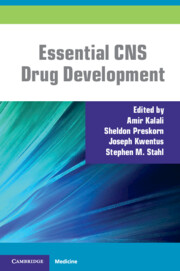
- Cited by 2
-
Cited byCrossref Citations
This Book has been cited by the following publications. This list is generated based on data provided by Crossref.
Parke, Tom Dragalin, Vladimir Turkoz, Ibrahim Marchenko, Olga and Haynes, Virginia 2014. Adaptive Design Applied to Identification of the Minimum Effective Dose in Schizophrenia. Therapeutic Innovation & Regulatory Science, Vol. 48, Issue. 1, p. 41.
Ablordeppey, Seth and Ofori, Edward 2021. Burger's Medicinal Chemistry and Drug Discovery. p. 1.
- Publisher:
- Cambridge University Press
- Online publication date:
- July 2012
- Print publication year:
- 2012
- Online ISBN:
- 9780511977640


